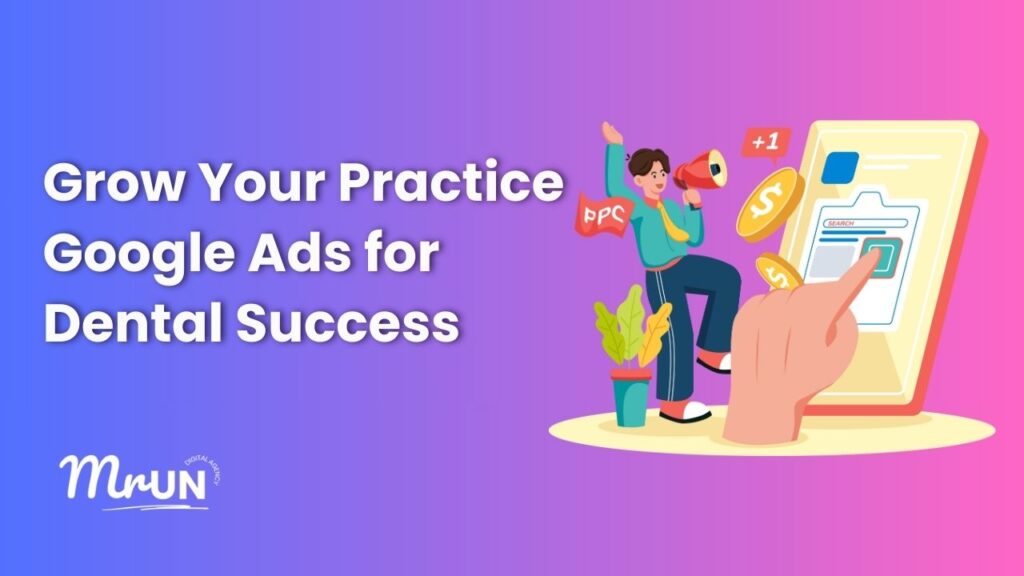In today’s competitive healthcare landscape, dental practices need innovative strategies to stand out and attract new patients.
While traditional advertising methods like print ads or flyers might still have their place, digital advertising—specifically Google Ads—has proven to be a game-changer for dental practices looking to grow their patient base.
Let’s explore how Google Ads can transform your dental practice’s patient acquisition strategy.
1. Targeted Reach for Local Patients
One of the key advantages of Google Ads is its ability to target specific geographic areas. As a dental practice, your audience is typically local. With location targeting, you can ensure your ads are shown only to people in your service area—whether that’s your city, neighborhood, or even within a specific radius of your clinic.
For example, if your dental practice is located in downtown Los Angeles, you can target potential patients searching for terms like “Dentist near me” or “Family dentist in Los Angeles.” This hyper-local approach ensures that your ad spend is optimized to reach the right audience.
2. Show Up When It Matters Most
Google Ads operates on intent-based targeting, meaning your ads appear when potential patients are actively searching for services you offer. Whether they’re looking for teeth cleaning, cosmetic dentistry, or emergency dental care, Google Ads ensures that your practice is front and center at the exact moment they need you.
This is incredibly powerful compared to traditional advertising, where you’re often guessing when and where your audience might see your message.
3. Cost-Effective Marketing with Measurable Results
Google Ads works on a pay-per-click (PPC) model, meaning you only pay when someone clicks on your ad. This ensures that your budget is being used efficiently. Additionally, Google Ads provides detailed performance metrics, allowing you to track:
- How many clicks your ads are receiving
- The cost per click (CPC)
- Conversion rates (e.g., how many clicks turn into booked appointments)
This transparency enables you to continuously refine your campaigns for maximum ROI.
4. Highlight Your Unique Selling Points (USPs)
With Google Ads, you can create compelling ad copy and use ad extensions to showcase what makes your practice unique. For example:
- Call Extensions: Allow users to call your practice directly from the ad.
- Location Extensions: Display your clinic’s address and show directions.
- Promotion Extensions: Highlight special offers, such as “Free Dental Exam for New Patients.”
These features make it easy for potential patients to connect with your practice and understand why you’re the right choice.
5. Dominate the Competition
The dental industry is competitive, and chances are, other practices in your area are already leveraging Google Ads. By running well-optimized campaigns, you can ensure your practice remains visible and competitive. Strategies like bidding on competitor keywords or running remarketing campaigns can give you an edge over others.
6. Attract Patients Across Services
Google Ads allows you to target different patient needs through tailored campaigns. For instance:
- Cosmetic Dentistry: Attract patients looking for teeth whitening or veneers.
- Family Dentistry: Reach families in need of routine check-ups.
- Emergency Dentistry: Ensure your ads show up for urgent searches like “Toothache relief near me.”
By segmenting your campaigns, you can effectively market all the services your practice offers.
7. Stay Top of Mind with Remarketing
Not every potential patient will book an appointment on their first interaction with your ad. Remarketing campaigns allow you to re-engage these users by showing your ads to people who have visited your website but haven’t converted yet. This keeps your practice top of mind and increases the likelihood of them choosing you when they’re ready.
Key Google Ads Strategies for Dentists:
- Keyword Research: Identify relevant keywords that potential patients are likely to use when searching for dental services. Tools like Google Keyword Planner can help you find high-volume, low-competition keywords.
- Compelling Ad Copy: Craft persuasive ad copy that highlights your unique selling propositions (USPs). Emphasize your experience, expertise, patient testimonials, and any special offers or promotions.
- Landing Page Optimization: Create dedicated landing pages for each of your ad campaigns. Ensure these pages are visually appealing, easy to navigate, and clearly communicate the value proposition of your practice.
- Retargeting: Use remarketing campaigns to stay top-of-mind with website visitors who haven’t yet converted into patients.
- Local SEO: Combine Google Ads with local SEO strategies to enhance your online presence in your local area. This includes optimizing your Google My Business profile and ensuring your practice is listed on relevant local directories.
Getting Started with Google Ads
- Set Clear Goals: Define your objectives. Are you looking to increase website traffic, generate leads, or directly book appointments?
- Conduct Thorough Research: Analyze your target audience and their online behavior.
- Create a Budget: Determine how much you’re willing to spend on Google Ads.
- Choose the Right Campaign Types: Select the most appropriate campaign types for your goals, such as Search, Display, or Video campaigns.
- Monitor and Optimize: Regularly monitor your campaigns’ performance and make adjustments as needed to improve their effectiveness.
Final Thoughts
Google Ads is a powerful tool that can transform your dental practice’s patient acquisition efforts. By leveraging its precise targeting, measurable results, and ability to showcase your unique offerings, you can attract more local patients and grow your practice sustainably.
If you haven’t explored Google Ads yet, now is the time to start. With the right strategy, your practice can achieve new heights and stay ahead in a competitive market.

